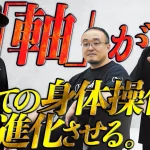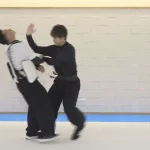The 59th All Japan Aikido Demonstration Returns to the Nippon Budokan
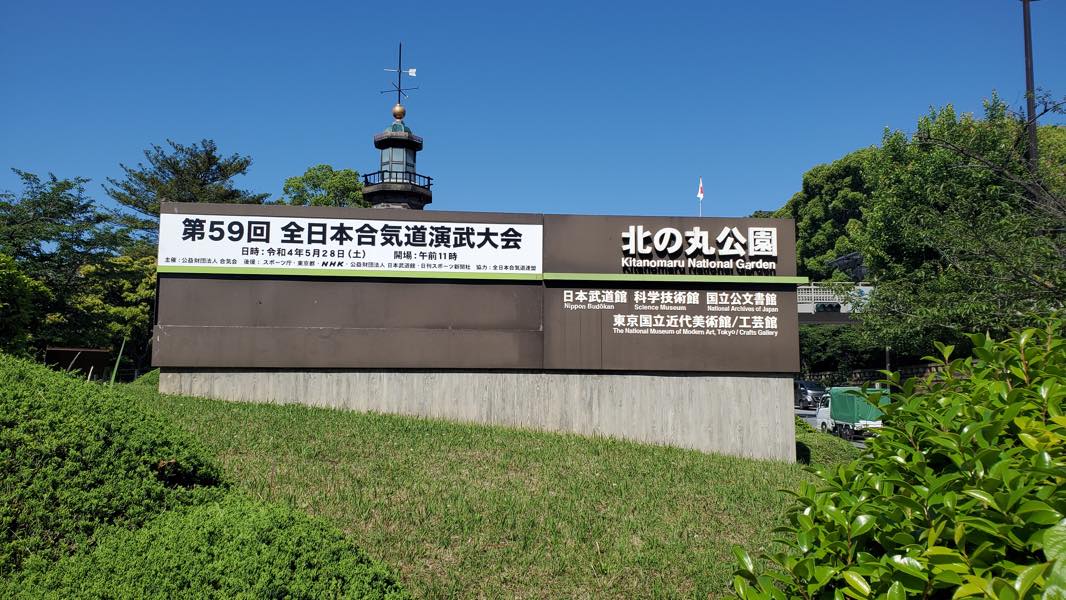
On Saturday May 28th 2022, the 59th All Japan Aikido Demonstration returned to the Nippon Budokan after a three-year hiatus due to the renovations undertaken ahead of the 2020 Tokyo Olympics, followed by the restrictions imposed in the midst of the Coronavirus pandemic. To make the event possible while guaranteeing maximum safety, it was held with a restricted audience.
Returning to the Budokan after three years obviously made this particular edition feel quite special and all through the day, I would be overcome with memories of my past attendances, starting as soon as I exited Kudanshita Station and walked along Yasukuni Dori under a glorious spring sun. I am certain that I was not the only one to feel this way, and in fact, when I opened the event booklet, I noticed that Doshu himself expressed such a feeling in his welcome message when he wrote:
Holding the event at the Nippon Budokan feels like coming home, and I am filled with relief and joy.
Ueshiba Moriteru Doshu – 59th All Japan Aikido Demonstration booklet
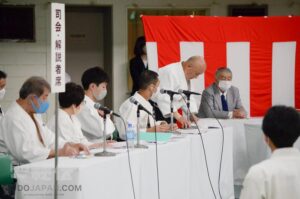
Ozaki Sho Shihan
The fact that this was my first time attending a major event since the pandemic started in February 2020 probably enhanced those feelings.
The first person I was able to greet was Ozaki Sho Shihan, the Chairman of the All Japan Aikido Federation, as we both passed Tayasumon Gate at the same time. Through the years, his presence, and perhaps more importantly his voice (he is making most of the announcements of the day), have become inseparably associated with the event.
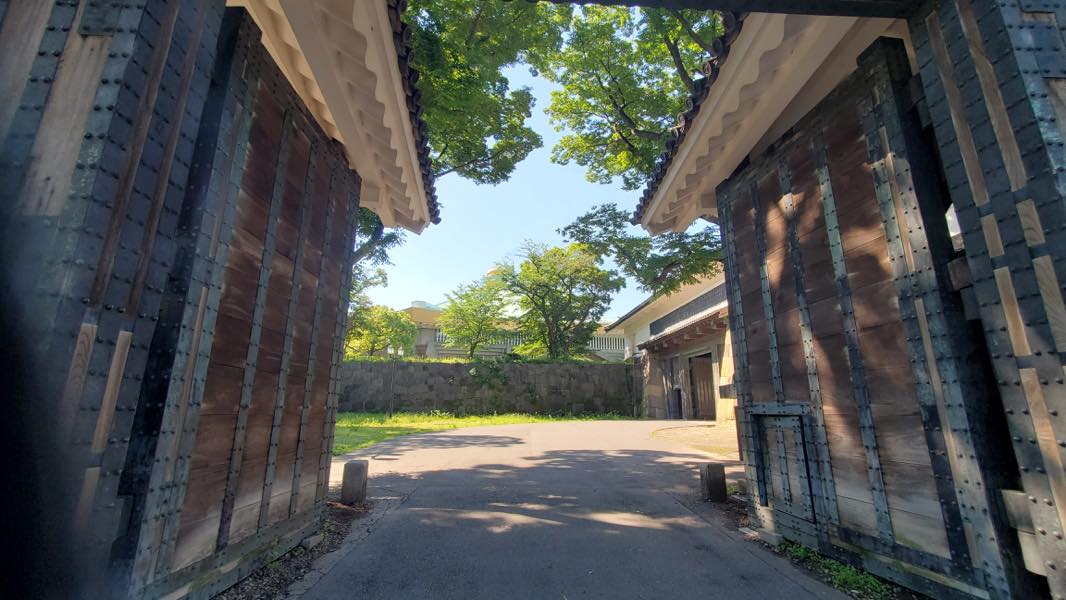
Tayasumon Gate
As I passed the entrance and went through the temperature check, I was greeted by some of the staff and teachers of the Hombu Dojo, including Satodate Jun Shidoin. I was fortunate to be here when he entered the Hombu Dojo as an uchi deshi and we trained many times together. Now he is a well respected 5th dan Hombu Dojo instructor and he has retained all of his wonderful human qualities.
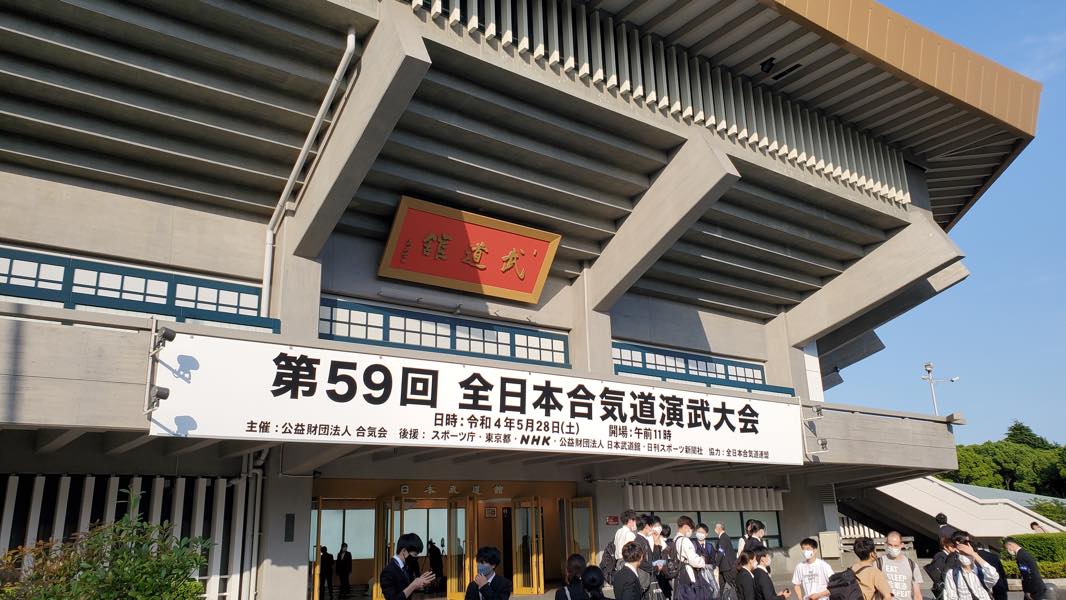
Entrance of the Nippon Budokan
Having moved to Yokohama, I was impacted by the successive state of emergency travel restrictions and as a result, I had not seen many of my Hombu Dojo friends for well over two years. Iit was wonderful to reconnect with those people who, for many years, were the closest thing I had to a family here in Japan. As I sat down, more and more memories came to me, along with a strong sense of nostalgia.
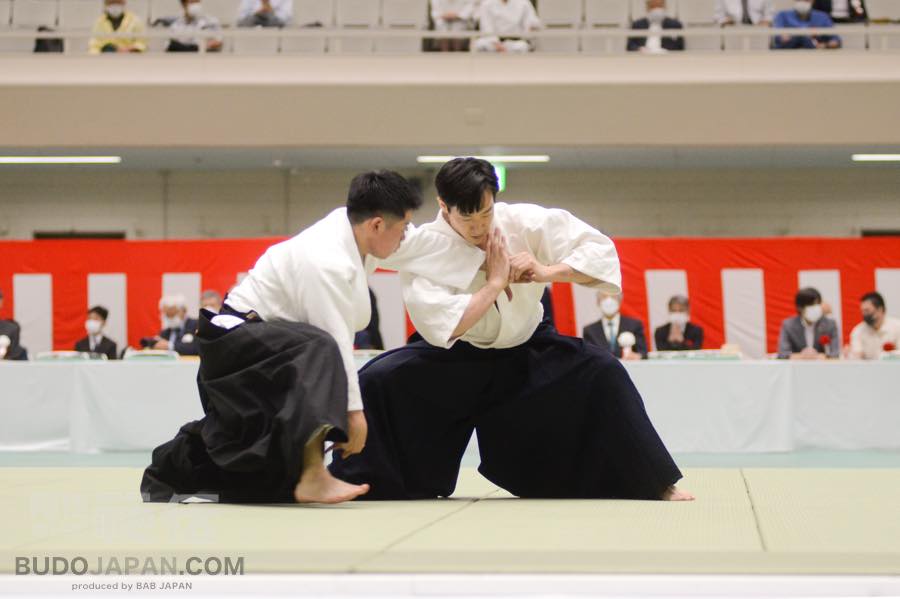
Suzuki Toshio Hombu Dojo Shihan
Then the first announcement was made and we all stood up for the national anthem of Japan. Hearing the entire Budokan resonate at the sound of thousands of voices always gives me goosebumps but this time, it felt odd, until I realized that of course, all I was hearing was the recorded track since people were refraining from singing as a coronavirus counter-measure. Sitting back down, I started to reflect upon the meaning of such large events.
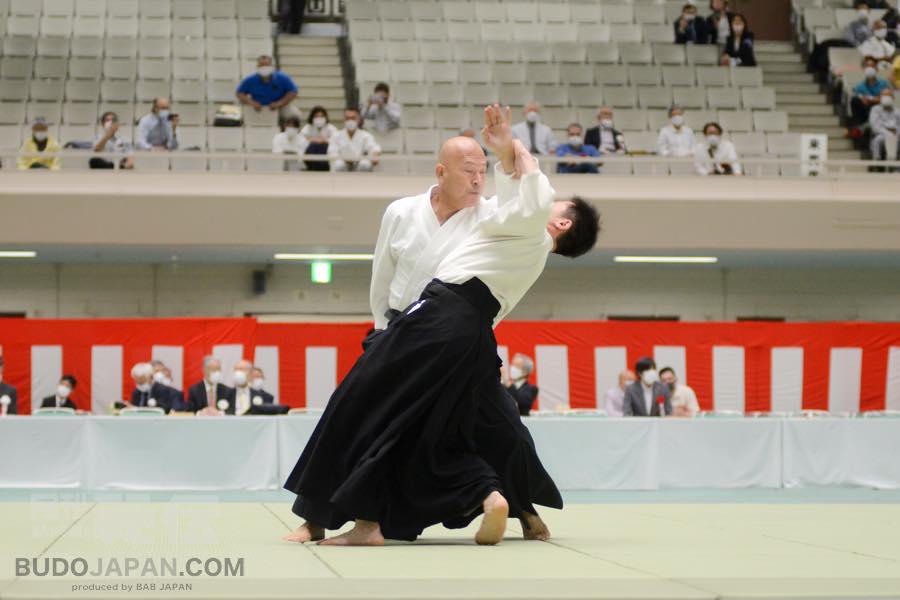
Kuribayashi Takanori Hombu Dojo Shihan
Reflecting on the meaning of demonstrations
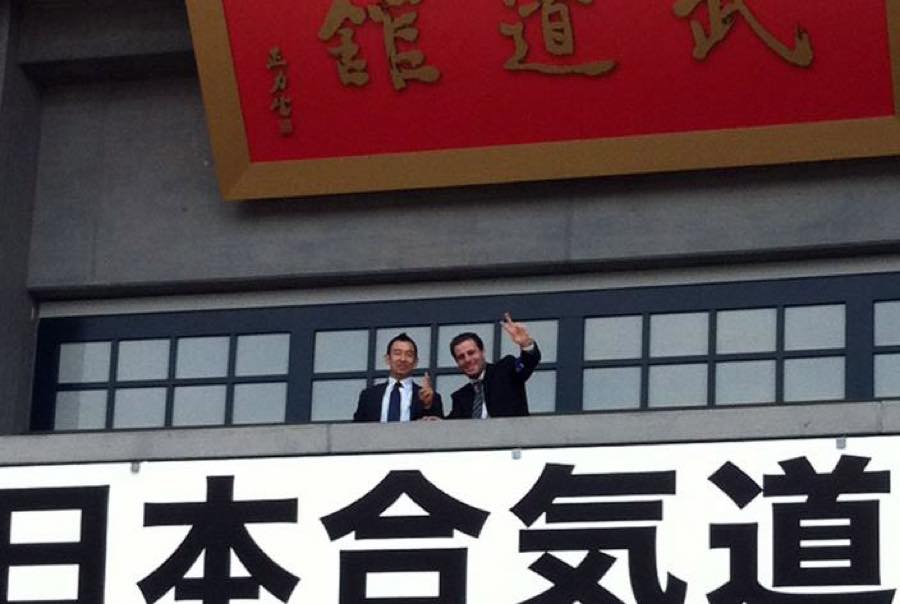
In 2011, as part of the Hombu Dojo volunteer team.
For many practitioners outside Japan, opportunities to train with a Japanese teacher can be scarce. When I was a child, I had never met a Japanese teacher so I would tirelessly watch VHS tapes and DVDs of the All Japan Aikido Demonstration in wonder at the exceptional skills being displayed. For me and many people around the world, those were the first and sometimes only windows onto what many refer to abroad as “Japanese Aikido”. Nowadays, thanks to the Internet, many people record videos and put them online so that even more people are able to enjoy them for free, almost in real time. I think that this is a wonderful opportunity for Aikido’s message to be seen worldwide.
I attended the All Japan Demonstration for the first time in 2009. It was a wonderful experience but it was also a much longer day than I had expected! Indeed I realized that there were many more demonstrations happening than just those of the high ranking shihan that are usually featured on tapes and DVDs.

As the Information Director for the International Aikido Federation in 2017
Through the years, I got the chance to participate in this event under several different roles. I attended as a member of the public, as a Hombu Dojo member for the general demonstration, as part of the organizing team of Hombu volunteers, and then as the Information Director for the International Aikido Federation. Those experiences gave me a better understanding of this major event and the various elements that go into setting it up.
In the West, people often think that demonstrations are meant to display excellence. However, I realized that to participate in a demonstration in Japan, it is not necessary to have a high level of technical proficiency, but instead, one just has to be an enthusiastic member of a dojo, no matter how long or short a time. Mr Suematsu Shinsuke, the Minister of Education, Culture, Sports, Science and Technology expressed a very important aspect of demonstrations in Japan in his own congratulatory message:
We hope that all participants will fully demonstrate the results of their daily training and showcase their wonderful aikido techniques and spirits.
Suematsu Shinsuke – 59th All Japan Aikido Demonstration booklet
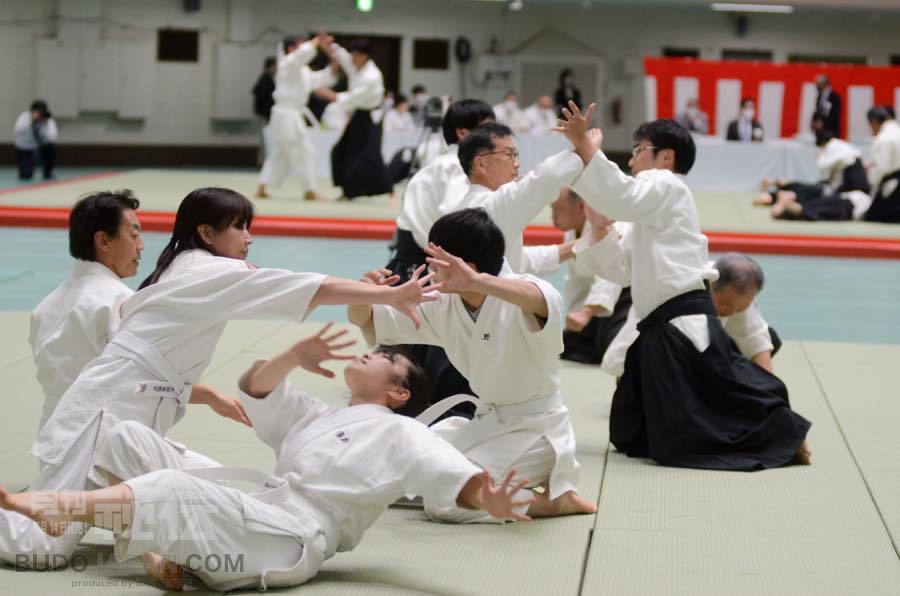
Ibaraki Aikido Federation Embu
As practitioners we may tell ourselves that we aren’t good enough to do a demonstration, but as Mr Suematsu suggests it, the demonstration is precisely supposed to give a glimpse of the truthful practice of the dojo across all levels. It is the joy of practicing that counts more than technical proficiency. This brings to Japanese demonstrations a sense of celebration and unity, where practitioners from all age, sex, and levels, present in all honesty their own take on Aikido practice. I would like this spirit to be better understood in the West.
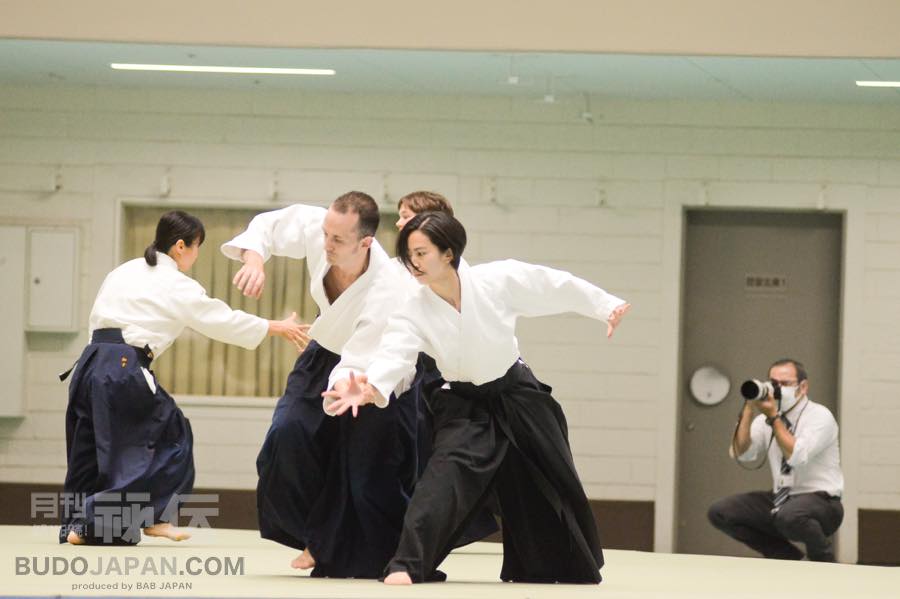
Aikido Okegawa Aikikai Dojo Enbu
A reflection put into practice
I had the opportunity to put this reflection in application very soon after. My dojo, Yokohama AikiDojo, had the honor of being selected along with three other dojos to represent the Kanagawa Prefecture Aikido Federation.
Due to the very busy end of year schedule, my assistant Mihaly Dobroka and I did not have time to prepare our demonstration. As we met downstairs a few minutes before our turn, we realized that we had not even talked about what to do! As we stepped in the arena, I remembered an article written by Ueshiba Kisshomaru Nidai Doshu many years ago entitled, “The Strictness of Demonstrations”, where he wrote:
There must be neither attempt to impress the audience, nor a deliberate display of self-aggrandizement. Demonstration is therefore a truly rigorous form of self-expression.
Ueshiba Kisshomaru ‐ The Strictness of Demonstrations ー Aikido Newspaper, November 10, 1974
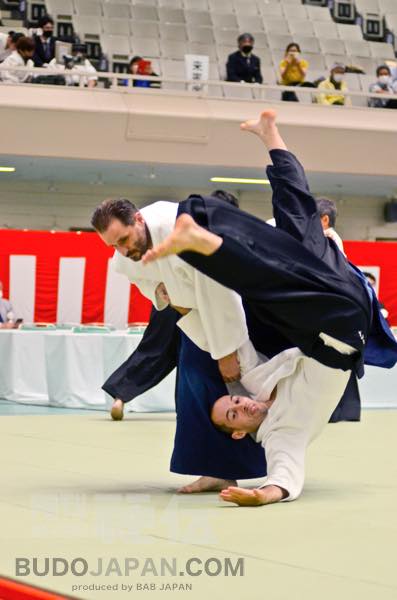
Demonstrating with Mihaly Dobroka as part of the Kanagawa Aikido Federation
I therefore told Mihaly to think of this demonstration as if we were in our usual class, nothing more, but nothing less. As we stepped on the mat, things became instantly clear, we were no longer nervous due to the fact that Doshu and the Aikikai Shihan were watching us, nor about the presence of the cameras or the public, and we just enjoyed those 1 minutes 30 seconds of Aikido, just like if we were back in our own dojo, in front of our own students.
As a dojo, it was wonderful for us to share the red tatami with other members of the Kanagawa Aikido Federation. This was particularly important for us since having opened our dojo at the highest point of the coronavirus pandemic, we had to work very hard in order to maintain the dojo alive, while staying in relative isolation. Today, all together, we felt like we were part of something larger, almost like relatives who meet at a big family event. It was a wonderful feeling. I would like to take the opportunity to sincerely thank Takeda Yoshinobu Shihan, Takeda Daiyu Sensei, Yamamoto Hiroshi Sensei, and the Kanagawa Aikido Federation for their constant support and advice during those harsh times of the coronavirus pandemic.
A day of diversity of approaches to Aikido
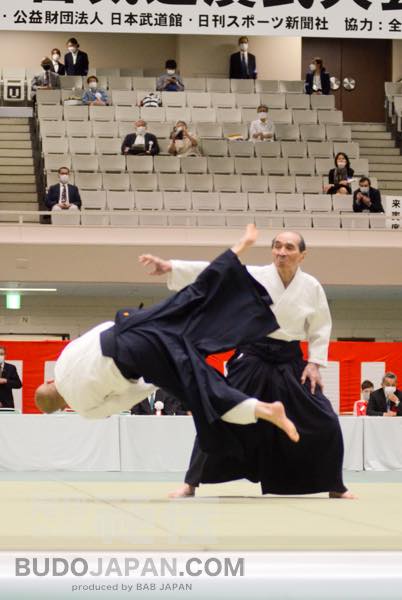
Tada Hiroshi Shihan
During the rest of the day, I sat and watched the great diversity of the various interpretations of Aikido. While one can often get tunnel-visionned in our own approach to practice, it is always useful to see how other teachers and schools perform the techniques that form the base of the Aikido curriculum.
Having practiced at the Hombu Dojo for over ten years, I always eagerly wait for the demonstrations of the Hombu Dojo teachers. I am always excited to see the evolution in their respective approaches to practice. I also always get a sense of bliss when I see the demonstrations of Hombu Dojo-cho and other Hombu instructors as they always make me very hopeful about the future of Aikido, not only in terms of their technical mastery, but also in their ability to bring Aikido to the new generation.
As the day went by, came the time of the demonstrations of senior instructors who were students of O Sensei, such as Endo Seishiro Shihan, Suganuma Morito Shihan, Kobayashi Yasuo Shihan, and Tada Hiroshi Shihan. On top of being diverse expressions of the highest levels of Aikido, their demonstrations show how Aikido is truly a lifetime endeavor. Those masters not only show that one can keep practicing Aikido through advanced age, but also that one can keep one’s body and spirit in great shape in spite of the decades of hard training. Most notable is of course the incredible dynamism of Tada Sensei, who will turn 93 years old this year.
Finally, came the time of the speech and demonstration by Doshu, who always stands for me as the embodiment of complete life commitment to the service of Aikido. In the midst of all the various interpretations of Aikido seen through the day, Doshu acts as a reference, an anchor relative to which everyone is free to explore their own Aikido.
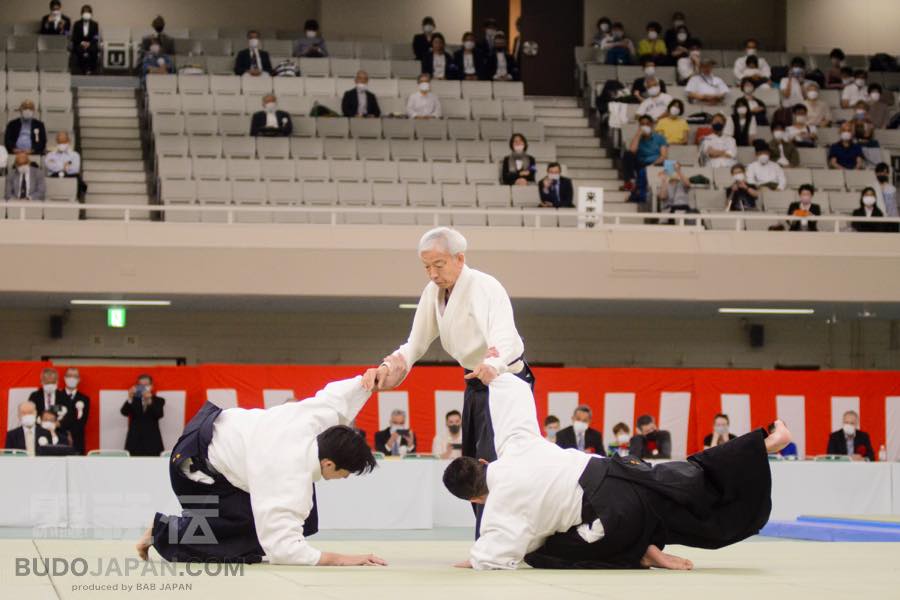
Demonstration by Doshu Ueshiba Moriteru
An expanding window to the world
I mentioned that the All Japan Aikido Demonstration was a major way for practitioners outside Japan to discover Japanese Aikido. The opposite is also true since there are usually demonstrations featuring several representative foreign Aikikai groups. Unfortunately, travel restrictions made that impossible this year.

Having dinner in Yotsuya with Wilko Vriesman and Kei Izawa.
For the first time, a representative team from the International Aikido Federation (IAF) was scheduled to demonstrate at the event but unfortunately, this could not occur either. However, Mr Wilko Vriesman and Mr Kei Izawa, respectively Chairman and Vice-Chairman of the IAF were able to attend as special guests and I am very happy to see international Aikido being invited and recognized in such a way in its homeland.
I have been collaborating with Izawa Sensei and Vriesman Sensei for many years. Eager to catch up, the three of us went for dinner to my favorite yakiniku restaurant in Yotsuya after the event, where we discussed upcoming projects for Aikido in Japan and abroad, which are all incredibly exciting!
Return to daily practice
As I made my way back to Yokohama, I reflected further on the All Japan Enbu Taikai and I realized how important it is, not only for Aikido as a discipline and as a community, but also for me, personally, as an Aikido practitioner in Japan.
One has to remember that showing Aikido so openly to the world was a major shift from traditional martial arts. Kisshomaru Nidai Doshu was the one who understood this need and he had to convince his father to show Aikido in public demonstrations for the first time. Ueshiba Morihei said the following around 1956, before the first public demonstration at the Takashimaya Department Store:
If it will help to clear the muddy waters, then I, too, will demonstrate the essence of aiki. I have already entrusted the affairs of this path to you. I have no objection to what you do as long as you do not stray from the great path of truth and mission for the sake of the world and others.
Ueshiba Morihei cited by K. Ueshiba, 植芝盛平伝, pp. 286-287.
Almost 70 years later, it is wonderful to see that Nidai Doshu, the current Doshu Ueshiba Moriteru, and Hombu Dojo-cho Ueshiba Mitsuteru stayed faithful to O Sensei’s ideals. I believe that the non-competitive nature of Aikido really helps maintain that harmony since at the end of the day, there are no winners and no losers, only people who joined and helped paint a rich and diverse picture of Aikido together. It brings an extra dimension that Aikidoka are fortunate to be able to gather under one roof around the Ueshiba family.

Hombu Dojo-cho Ueshiba Mitsuteru
As everyone made their way to their respective prefectures and dojo, I am sure that all of them felt reinvigorated with the feeling of unity that we got today. Next year, I hope that the event will be completely open to the public and that I can bring my own students so that they can experience this special day.
About the author

Guillaume Erard
Guillaume Erard is an author and educator, permanent resident of Japan. He has been training for over ten years at the Aikikai Headquarters in Tokyo, where he received the 6th Dan from Aikido Doshu Moriteru Ueshiba. He studied with some of the world’s leading Aikido instructors, including several direct students of O Sensei, and has produced a number of well regarded video interviews with them. Guillaume now heads the Yokohama AikiDojo and he regularly travels back to Europe to give lectures and seminars. Guillaume also holds the title of 5th Dan in Daito-ryu aiki-jujutsu and serves as Deputy Secretary for International Affairs of the Shikoku Headquarters. He is passionate about science and education, and he holds a PhD in Molecular Biology. Guillaume’s work can be accessed through his website and on his YouTube channel.





